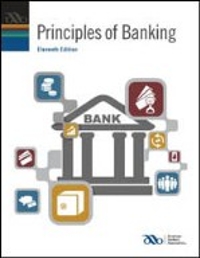1.) The Table below shows Canadian industries that use small and large amounts of debt respectively. Explain why these industries choose the debt policies they do. Except possibly in the case of the mining industry, you should be able to find a rationale that applies to the whole group of 4 industries, and not have to explain each industry separately.
| Debt/Equity Ratios for Canadian Industries |
| | | | | | |
| | 2015 | 2016 | 2017 | 2018 | 2019 |
| Low debt | | | | | |
| Repair, maintenance and personal services | 0.73 | 0.722 | 0.829 | 0.78 | 0.72 |
| Professional, scientific and technical services | 0.86 | 0.547 | 0.56 | 0.674 | 0.653 |
| Educational and healthcare services (private, non-gov't) | 0.81 | 0.77 | 0.681 | 0.693 | 0.656 |
| Mining | 0.508 | 0.564 | 0.503 | 0.73 | 0.673 |
| | | | | | |
| High Debt | | | | | |
| Construction | 1.699 | 1.57 | 1.593 | 1.565 | 1.477 |
| Motor vehicle and parts dealers | 2.656 | 2.516 | 2.629 | 2.378 | 1.683 |
| Real estate | 2.134 | 1.944 | 1.869 | 1.994 | 1.926 |
| Machinery and equipment rental and leasing | 1.904 | 1.962 | 1.975 | 1.864 | 1.668 |
2.) Look at the accompanying file with Apple's financial statements from 2010-2012 and explain why Apple used no debt financing during this period

APPLE THREE-YEAR FINANCIAL HISTORY Results of Operations (in $ millions, except shares in thousands, per share amounts) FY 2012 FY 2011 FY 2010 Net sales: Domestic International Total net sales $60,949 95,559 156,508 $41,812 66,437 108,249 $28,633 36,592 65,225 Costs and operating expenses: Cost of sales 87,846 64,431 39,541 Research and development (R&D) Selling, general and administrative (SG&A) Total operating expenses 3,381 10,040 13,421 2,429 7,599 10,028 1,782 5,517 7,299 Operating income Other income/(expense), net Income before provision for income taxes Provision for income taxes 55,241 522 55,763 14,030 33,790 415 34,205 8,283 18,385 155 18,540 4,527 Net income $41.733 $25,922 $14,013 Diluted earnings per share Shares used in computing diluted earnings per share (in thousands) Cash dividends declared per common share $44.15 945,355 $2.65 $27.68 936,645 $0.00 $15.15 924,712 $0.00 Financial Position ($ millions) September 29, 2012 September 24, 2011 September 25, 2010 Cash, cash equivalents and marketable securities Accounts receivable, net Inventories Property, plant and equipment, net Total assets Current liabilities Non-current liabilities Shareholders' equity $121,251 $10,930 $791 $15,452 $176,064 $38,542 $19,312 $118,210 $81,570 $5,369 $776 $7,777 $116,371 $27,970 $11,786 $76,615 $51,011 $5,510 $1,051 $4,768 $75,183 $20,722 $6,670 $47,791 Other Data (Unaudited) September 29, 2012 September 24, 2011 September 25, 2010 Regular employees Temporary employees and contractors 72,800 3,300 60,400 2,900 46,600 2,800 FY 2012 FY 2011 FY 2010 International net sales as a percentage of total net sales Gross margin as a percentage of net sales R&D as a percentage of net sales SG&A as a percentage of net sales Operating income as a percentage of net sales Return on net sales Price range per common share 61% 43.996 2% 696 35% 27% $354.24 - $705.07 61% 40.5% 2% 7% 31% 24% $275.00 - $422.86 56% 39.496 396 8% 28% 21% $180.70 - $293.53 APPLE THREE-YEAR FINANCIAL HISTORY Results of Operations (in $ millions, except shares in thousands, per share amounts) FY 2012 FY 2011 FY 2010 Net sales: Domestic International Total net sales $60,949 95,559 156,508 $41,812 66,437 108,249 $28,633 36,592 65,225 Costs and operating expenses: Cost of sales 87,846 64,431 39,541 Research and development (R&D) Selling, general and administrative (SG&A) Total operating expenses 3,381 10,040 13,421 2,429 7,599 10,028 1,782 5,517 7,299 Operating income Other income/(expense), net Income before provision for income taxes Provision for income taxes 55,241 522 55,763 14,030 33,790 415 34,205 8,283 18,385 155 18,540 4,527 Net income $41.733 $25,922 $14,013 Diluted earnings per share Shares used in computing diluted earnings per share (in thousands) Cash dividends declared per common share $44.15 945,355 $2.65 $27.68 936,645 $0.00 $15.15 924,712 $0.00 Financial Position ($ millions) September 29, 2012 September 24, 2011 September 25, 2010 Cash, cash equivalents and marketable securities Accounts receivable, net Inventories Property, plant and equipment, net Total assets Current liabilities Non-current liabilities Shareholders' equity $121,251 $10,930 $791 $15,452 $176,064 $38,542 $19,312 $118,210 $81,570 $5,369 $776 $7,777 $116,371 $27,970 $11,786 $76,615 $51,011 $5,510 $1,051 $4,768 $75,183 $20,722 $6,670 $47,791 Other Data (Unaudited) September 29, 2012 September 24, 2011 September 25, 2010 Regular employees Temporary employees and contractors 72,800 3,300 60,400 2,900 46,600 2,800 FY 2012 FY 2011 FY 2010 International net sales as a percentage of total net sales Gross margin as a percentage of net sales R&D as a percentage of net sales SG&A as a percentage of net sales Operating income as a percentage of net sales Return on net sales Price range per common share 61% 43.996 2% 696 35% 27% $354.24 - $705.07 61% 40.5% 2% 7% 31% 24% $275.00 - $422.86 56% 39.496 396 8% 28% 21% $180.70 - $293.53







